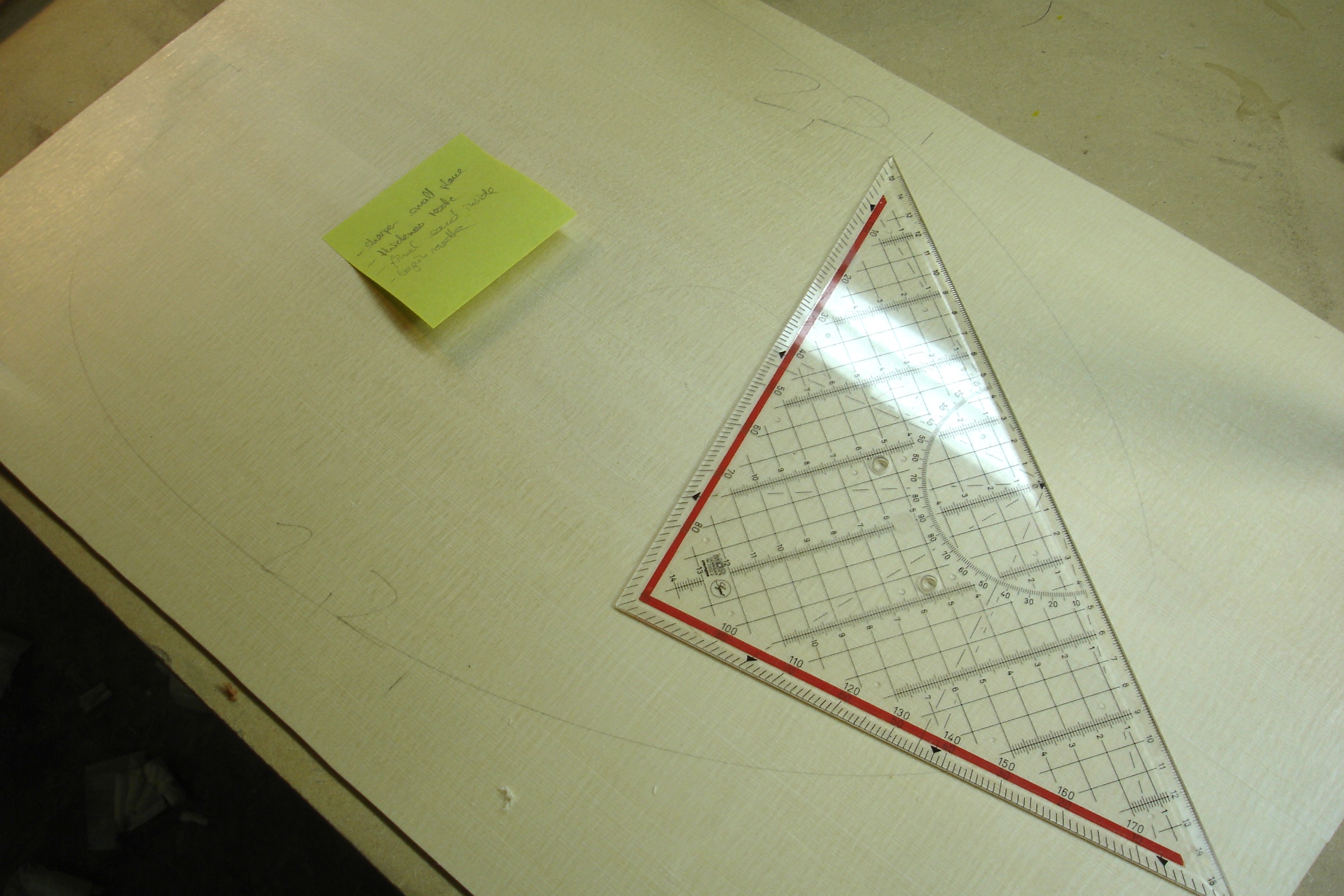Thicknessing the New Top
This picture shows the inside of the lute top. The body shape is drawn onto the inside and the rosette location is marked, and then the final thicknessing procedure can begin. Lutes typically have very thin tops; around 1.6 to 1.8 mm around the edges, 1.2 to 1.4 mm in the center and 1.0 mm at the rosette. It is important to thin out the rosette area significantly to make carving the rosette a concise and clean affair. If the top was too thick (e.g. hard to cut with a scalpel), the luthier would have to use excessive force to cut the fragile rosette pattern. This could result in tear-out or even broken sections, which is absolutely not allowed in this work process.






